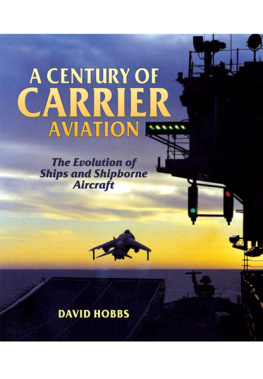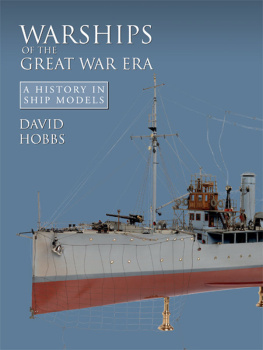
The British Pacific Fleets operational area. (Authors collection)
Copyright David Hobbs 2011
This edition first published in Great Britain in 2011 by
Seaforth Publishing
An imprint of Pen & Sword Books Ltd
47 Church Street, Barnsley
S Yorkshire S70 2AS
www.seaforthpublishing.com
Email
British Library Cataloguing in Publication Data
A CIP data record for this book is available from the British Library
ISBN 978 1 84832 048 2
EPUB ISBN: 978 1 78346 922 2
PRC ISBN: 978 1 78346 689 4
All rights reserved. No part of this publication may be reproduced or transmitted in any form or
by any means, electronic or mechanical, including photocopying, recording, or any information
storage and retrieval system, without prior permission in writing of both the copyright owner
and the above publisher.
The right of David Hobbs to be identified as the author of this work has been asserted in
accordance with the Copyright, Designs and Patents Act 1988
Typeset and designed by JCS Publishing Services Ltd, www.jcs-publishing.co.uk
Printed and bound by MPG Books Group, UK
Contents
Dedication
As the achievements of the British Pacific Fleet pass beyond living experience, this book is dedicated to keeping alive the memory of Admiral of the Fleet Lord Fraser GCB KBE and the men of the Fleet he created and led so effectively.
Preface
MY INTEREST IN THE British Pacific Fleet started when I joined HMS Victorious, in the Far East Fleet, as a Midshipman in 1966 and began to take a keen interest in the part the ship had played in the Second World War. Apart from the ship herself, there were many men still serving who had been in the BPF and I wish I had written down all the anecdotes I heard from them at the time. Two years later I joined HMS Hermes, also in the Far East Fleet. She was commanded by Captain D G Parker DSO DSC AFC RN who had commanded a Corsair squadron in HMS Formidable during Operation Iceberg and operations over Japan. I flew Gannet AEW 3 aircraft in 849 Naval Air Squadron, a unit that had, in a previous incarnation, been one of the BPFs strike squadrons winning battle honours from Palembang to Japan. These influences, and a fascination for the Pacific Ocean itself, led me to study the BPF in growing detail and, ultimately, to setting down the results of my research in this book.
The more I studied it, the more I came to realise that the post-war Royal Navy in which I served for thirty-three years owed much of its concept of operations to the outstanding achievements of the BPF in the year from November 1944 to November 1945. The ability to improvise and make replenishment at sea both possible and practical and to absorb new ideas, working within international coalitions when necessary, were also key elements in the modernised post-war Royal Navy that fought so effectively off Korea, in the South Atlantic and in the Gulf. Not least, the implementation of the true potential of carrier-borne aircraft to project power, rather than act merely as an auxiliary arm shackled by political limitations, provided the catalyst that allowed the Royal Navy to become one of the worlds leading proponents of air power in the immediate post-war period.
It is interesting to note, however, that even at the height of its wartime strength the Royal Navy could not operate alone in the Pacific and needed significant contributions from Canada, Australia and New Zealand to achieve the aim of creating a fleet from scratch in a few short months that could fight alongside the United States Navy as a professional equal. It is at least arguable that the United States Navy needed the BPF in August 1945 if it was to sustain a fleet capable of launching Operation Olympic, the invasion of Kyushu, in November and of remaining in action against the scale of casualties that would have been likely. The fact that it was able to achieve such a difficult aim was, arguably, the Royal Navys greatest achievement of the war. That achievement was made possible by the ingenuity and perseverance of thousands of un-named men and women from throughout the Commonwealth who served in the fighting ships, auxiliaries and in shore establishments.
In this book I have tried to strike a balance between recounting what happened, why it happened, and individual experiences in a way that will make it both readable and informative. I am conscious that for every name mentioned, many more have been omitted but hope that by telling the story in more detail than hitherto the memory of the whole British Pacific Fleet will be kept alive for another generation to study and admire.
David Hobbs MBE
Commander Royal Navy (Retired)
Crail
2011
Acknowledgements
I AM, AS ALWAYS, grateful to my wife Jandy and my son Andrew for their unfailing support and help in everything I do.
Before I even thought of writing about the BPF I collected anecdotes and data from many of its former members, notably Rear Admiral D G Parker CB DSO DSC AFC who was my captain in HMS Hermes. He and many others, too numerous to list, are sadly no longer with us but I thank them all for their contributions which have been fitted into the overall picture. Dickie Richardson and Roy Gibbs of the Telegraphist Air Gunners Association have been particularly helpful.
I am also grateful to Captain Christopher Page RN, Head of the Naval Historical Branch (NHB) until 2010, Admiralty Librarian Jenny Wraight and Mike MacAloon at NHB for their ability to answer questions and find documents at very short notice. Doctor David Stevens, Director of Strategic and Historical Studies at the Sea Power Centre Australia and his Senior Historian John Perryman have both given me unstinting help and encouragement. John Jeremy gave me valuable insight into the work of the Sydney Dockyards in 1945 and Peter Nash generously made the results of his own research into RN and USN logistic support arrangements available to me, particularly with regard to USN reports; Vince Fazio thought of me when cataloguing his photographic collection and provided some interesting pictures. Captain Paul Martin RAN of the Naval Historical Society of Australia gave valuable help with details of the BPF Memorial in Sydney.
I wish, especially, to acknowledge the late J David Brown, formerly Head of the Naval Historical Branch, who encouraged me to become a naval historian. On his untimely death in 2001 he left me his photographic library and written research material, compiled from RN and USN Reports of Proceedings and interviews with individuals. These proved to be a great help when I began to write this book; the material has no pagination but remains a treasured part of my archive.
The majority of the images come from my own collection which has grown since 1966 but all are annotated with their source. Maps were re-drawn from official sources by Peter Wilkinson.
I am extremely grateful to Rob Gardiner and Seaforth Publishing for giving me the chance to set down the story of the BPF in print and keep its memory alive.
Glossary
AAA | Anti-Aircraft Artillery |
ACNB | Australian Commonwealth Naval Board |
ACNS | Assistant Chief of the Naval Staff |
ACS | Aircraft Carrier Squadron |
ADC | Australian Defence Committee |
ADNC | Assistant Director of Naval Construction |
ASDIC | RN term for sonar from Anti-Submarine Detection & Indication Committee |
Next page














